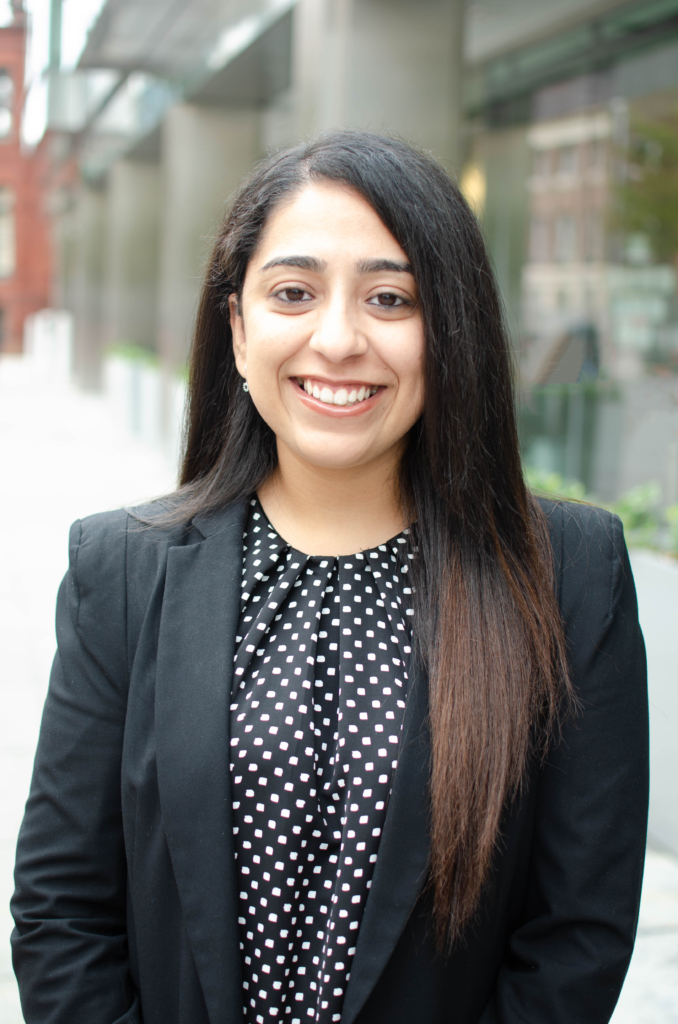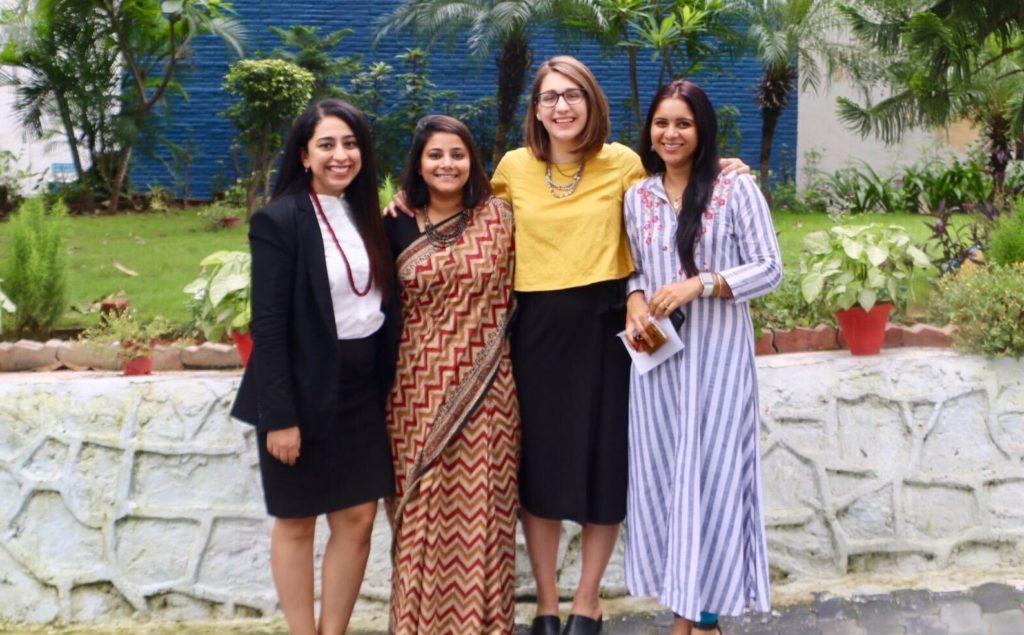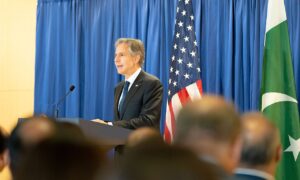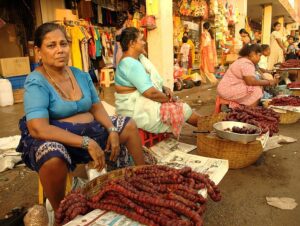
Akriti Vasudeva is a research analyst with the Stimson Center’s South Asia program. Her research focuses on U.S.-India defense and strategic cooperation, geopolitics of South Asia and the Indo-Pacific, and Indian foreign policy. She is also Editor-at-large at South Asian Voices, an online magazine featuring strategic analysis and commentary on the security, politics, and economics of the subcontinent.
Why do you work at Stimson?
I am from India, and I came to Washington, DC to study international relations and Asian politics with a focus on South Asia. I come from a background in journalism, so this was my first experience with the international relations field. I was looking to dig deep into a new area. When I went to the library, I found shelves and shelves of books on East Asia—on China, Japan, and South Korea. But I couldn’t find enough books on the Indian subcontinent. I couldn’t even find enough classes on South Asia. In fact, I had to talk to my advisor about taking classes that were even tangentially related to South Asia because otherwise I wouldn’t have been able to fulfill the electives for my concentration.
That surprised and frustrated me because I came to the US to study this consequential region. I truly believe that South Asia, particularly India, is pivotal to U.S. policy. India has a positive role to play in the world and the US-India relationship can anchor that endeavor. Unfortunately, I came here and realized that very little attention was being paid to that relationship.
But then I came across Stimson. Stimson was working on these issues since the late 80s, had built decades of relationships, and was focused on this region before many others. It now has the largest South Asia program in Washington, DC. I was heartened to finally find a place that was as passionate about this work as I am. I joined as an intern and have now stayed at Stimson for over five years because I love the collaborative environment here. I value how we build each other up, how multi-cultural and multi-national the staff is, and that I get to work with some of the smartest people in the world.
What did you do before you came to Stimson?
My undergraduate degree is in engineering, which taught me analytical reasoning and critical thinking. But in the back of my mind, I knew I wanted to make a career out of writing. From a young age, I was a voracious reader and took to writing to express myself. At one point, I even wrote some angsty teenager poetry! I was always interested in the world and what was going on beyond me—I think it has something to do with growing up around my father and grandfather who read two to three newspapers a day, often in different languages. And I thought journalism was the way to satiate that desire to write and learn more about global affairs. Even while studying engineering, I worked for my college magazine and then interned at a popular youth magazine, which taught me the fundamentals of writing. I ultimately transitioned to studying journalism at one of India’s top communications schools, and eventually got a job working for two of India’s largest English-language daily newspapers. I worked in both Mumbai and New Delhi, on the education and environment beats. Nothing related to security. But, through the environment beat, I got to attend the United Nations Biodiversity Conference, which was happening in India for the first time in 2012. There were delegates from all over the world and for the first time, I got to see international relations and negotiations in action. I was fascinated.
I then realized I wanted to do something that was broader than journalism. I liked the element of speaking truth to power in journalism, but I wanted to be more involved in the actual policymaking process. And that’s what led me to apply to graduate school in the US and eventually work at Stimson.
What is something you wish people understood about your work?
Sometimes work on South Asia that is done in the US has a sense of, “let us help you.” The agency and autonomy these countries have in developing their own policies or navigating their bilateral relations is not given enough credit or respect. When US policy in the region is discussed, it’s important to acknowledge the agency of these countries and to ask how the US can support rather than drive the conversation.
A large part of what the South Asia program does is to build strategic literacy in each country about the other. And a lot of South Asian Voices’ (SAV) work is to decode the region for different audiences to help them understand what’s going on, from both the security and political perspectives. Many of the problems in the region are contentious and have deep historical roots, but younger analysts who are able to look at that history dispassionately and are not as encumbered by existing narratives are able to cut through all that to speak truthfully and creatively about issues and solutions. Also, the South Asian discourse has often been dominated by a narrow set of views and a top-down approach. By highlighting a diverse group of researchers from the region, both geographically and ideologically, SAV is bringing authentic voices from the region and thereby supporting a more bottom-up approach to analysis.
From a US perspective, what we are trying to do with SAV is make sure that American policymakers are paying attention to emerging analysts in the space who are interpreting for external audiences what’s going on in the region. These are well-informed and thoughtful scholars on the ground, who are probably going to be future policymakers themselves.
What accomplishment are you most proud of this year?
Professionally, I’m proud of how quickly the South Asia team and SAV have adapted to the COVID-19-induced virtual environment. In the past six months, we’ve done four webinars assessing significant developments in the subcontinent and are planning many more. In fact, our first such event on the geopolitical implications of COVID-19 was Stimson’s first webinar since the lockdown began. A large portion of our audience is in South Asia, so it’s often difficult to get people in the same physical room. But using a virtual setting allows for many more people to participate and allows us to feature a diversity of perspectives. So in some ways, this adversity has also presented tremendous opportunities.
Personally, I’m excited about my research and the work I’m doing to establish myself as a female scholar in this field as well as create space for others. It’s disappointing to encounter the wide prevalence of “manels” or men-only panels in 2020. Women with decades of experience are still ignored when it comes to being invited to speak on TV panels or write commentary about important security issues even when they are spearheading a lot of that work. This is particularly visible right now in the analysis of the India-China border standoff.
But I’m trying in my own way to push for parity by supporting other women and advocating for them. For instance, South Asian Voices has an all-female editorial team, which is rare in the foreign policy community. Part of my push for parity is also holding myself accountable and modeling the behavior that I want to see in others. For example, I realized that a recent webinar that I was convening and moderating didn’t have equal participation from men and women. So, I actively worked to change that to demonstrate that it is possible to account for inequities and also because if any other organizer had done that, I would expect better of them.
I’m also proud to be the co-chair of Stimson’s Diversity, Equity, and Inclusion (DEI) Committee. Stimson is an exception because we have so many women working in research and senior positions. It’s a blessing to work in an organization where women’s viewpoints are championed and highlighted, but it’s not representative of the field as a whole, which is still heavily male-dominated. And Stimson is certainly not representative of the field as it gets highlighted in panel discussions, citations, speaking engagements, etc. As a woman and a person of color, that bothers me. I want to have a broader impact than just my research, which is why I always look at what I do through a DEI lens. Policy should consider as many perspectives and inputs as possible. But because the field often excludes women experts and indeed people of color, policy solutions do not take into account the different lived experiences and nuanced perspectives of underrepresented groups, leaving problems, large and small, unaddressed.
Follow Akriti on Twitter @avasudeva_87, and learn more about the South Asia program.




